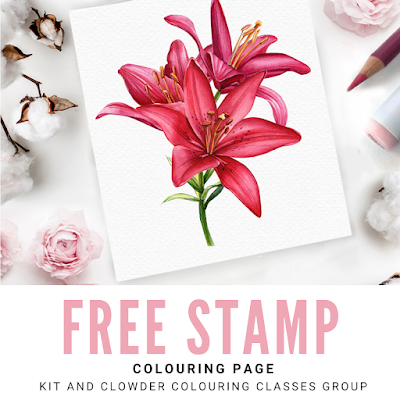Art Basics 101 Lesson: Colour Value
Friday, September 06, 2019Hi everyone! Hope you are having a colourful week and have been taking some mindful time just for you to destress and clear your mind. If it's been a busy week, make sure you schedule in just 15 minutes for you over the weekend to have a guilt-free time out - you deserve it.
This week, I have a mini art lesson for you to help you learn some real art fundamentals behind what you are colouring. On the stamp above from Jade Dragonne, I’ve used just one colour blend (5 markers) to help show you that you don’t need a full collection of markers or pencils to start learning more about colouring ❤️
When we use only one blend on an image, we are employing the art fundamentals of working with colour VALUES to help each part of the image have depth and stand out from the rest. I’ve put together a mini beginners art lesson here on what value is. and how to employ this in your colouring projects.
What is the VALUE of a colour?
When we work with just one colour blend on an image, it's important to show that each object is different so they don't all end up being the exact same colour, so we will end up doing some lighter objects and some darker objects. This is called playing with the VALUE of the colour blend. Value is how light or dark a colour is. So when doing, say, Sepia or Monochromatic tones, you want high value coloured objects (lighter) vs low value coloured objects (darker) of the same blend so you have contrast in the image and everything doesn’t look the same. Take for example, the image I've coloured here - even though I've used the exact same colours on each part of the image, we can clearly see her skin is a higher value than the hair, communicating to our eye that the skin is a lighter colour overall than the hair is, and creating contrast between the two objects so we can clearly define them.
How can we adjust the colour value?
So once you understand what value is, you can implement this in your colouring by adjusting how much, or little, of the lighter vs. darker colours are used in a blend. An increase in how much of the darker colours are used in the blend will make the overall value appear lower (darker), whereas an increase in the amount of the lighter colours used will make the colour blend appear higher in value (lighter). Have a practice - using one colour blend, colour up an object and use equal amounts of each colour to get a neutral blend. Then, try the image again, but increase the amount of the darker colours, while decreasing the lighter colours, to lower the value. Then, do another practice increasing the lighter colours and decreasing the darker to raise the value. Now you can adjust the value of one single colour blend simply by adjusting the amount of each colour used!
Why is learning these fundamentals important?
It’s helping you to understand why we colour the way we do; to communicate that objects have form and are three dimensional, to show texture, depth, and materiality. It stops you from just guessing but actually understanding why you are doing each step with your colouring. Many people can fall into a bit of a trap thinking just following along will help you learn, but the old saying of "you don't know what you don't know" really comes into play here - art has real fundamentals and theories that make up it's foundations and learning and understanding them will really help you take the next steps, whether you are a beginner or more advanced. When you do a class at Kit and Clowder you aren't just following along like a youtube how-to video; you are learning real art fundamentals and the background theories like this that help you colour any image at all. This is a big difference between doing an actual class and just a colour along, to really help you grow and understand technique.
Ready to learn more? If you'd like to learn more about colouring with me and see some videos of these techniques, check out our classes at www.kitandclowder.com (freebies on the homepage!). If you'd like to try colouring this image with me, she's from our Sepia Colouring Lesson in our Mini Class Bundle 1, and you can take a close peek below! The lesson also comes with full pencil instructions aswell.
I hope you've enjoyed this mini art lesson - I'd love to hear your thoughts in the comments and whether you'd like more posts like this! Have a colourful weekend and remember to take a time out just for you - you deserve it x


























2 comments
I really like this post. As a beginner it is exactly what I am looking for. Learn to walk before running.
ReplyDeletethank you for this post and clear explaination. I look forward to see more of these with important babysteps to colour.
ReplyDelete